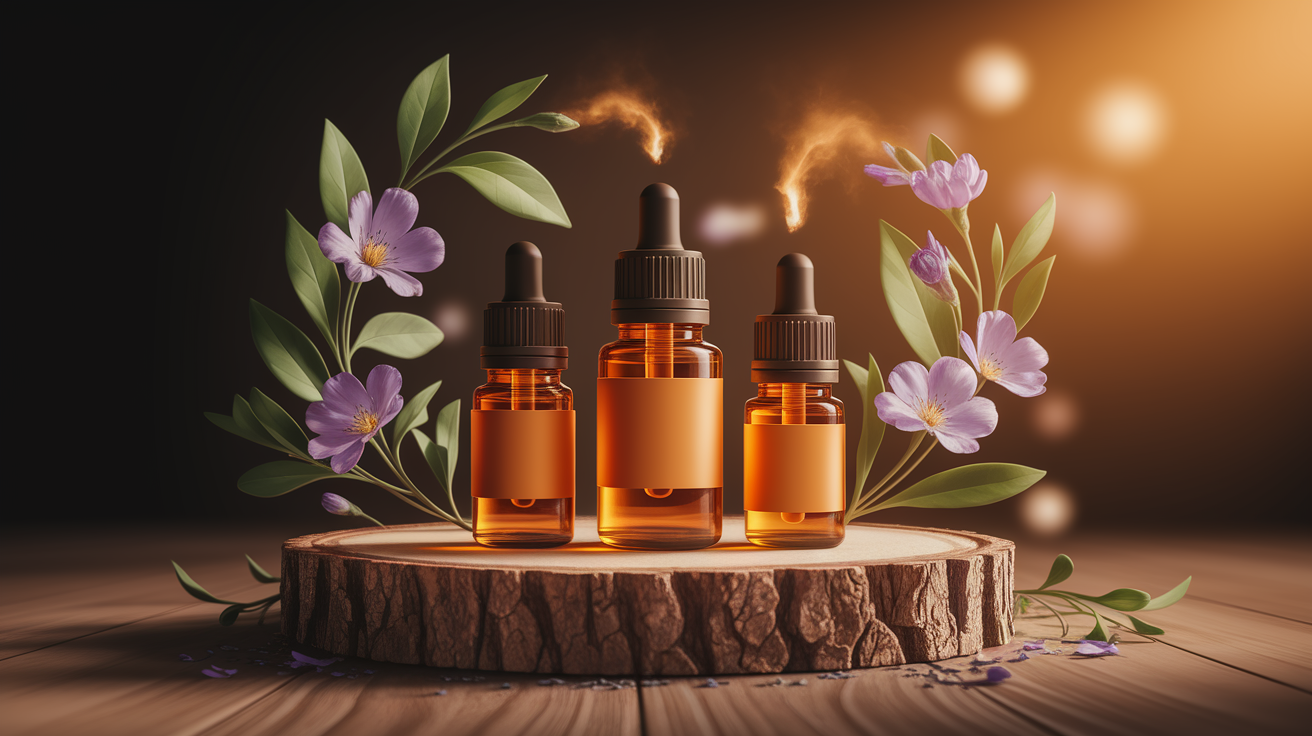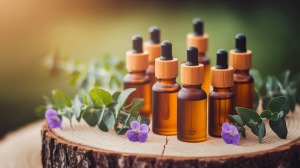Introduction – Scent Signals: EO Meets Digital Therapy
It’s wild how something as fleeting as a whiff of lavender or peppermint can pull you into a completely different state of mind—calm, alert, energized, even sentimental. Now picture those scents being woven into digital therapies, their molecules arriving in perfect sync with biometric data streaming from wearables. That’s the frontier we’re stepping onto: essential oils meeting high-tech platforms, a marriage of ancient plant wisdom and modern precision tools. No guesswork, no “maybe it’s working”—just scent technology tuned to your mind and body in real time.

How Essential Oils Engage Olfactory Pathways
When you inhale essential oils, you’re doing more than noticing a pleasant smell—you’re triggering a cascade that runs straight from the nose to the brain’s emotional control centers. Molecules like linalool from lavender slip into the olfactory receptors tucked deep in the nasal epithelium. Signals zip upward through the olfactory bulb and land in the limbic system, where they can influence neurotransmitter release like serotonin or endorphins. You can dive deeper into this chain reaction with sources such as this detailed review and this analysis covering the science of aromatherapy. It’s one of the few sensory channels that’s wired directly into emotional and physiological regulation, which makes it gold for therapeutic applications.

Smart Delivery Systems for Essential Oils
The magic gets even sharper when essential oils hitch a ride on digital scent delivery systems—devices designed to release precise therapeutic fragrances at just the right moment. Think aroma diffusion technology linked to biomarker detection: maybe your wearable spots a spike in heart rate and signals a peppermint burst to boost focus, or tracks lower brainwave activity and cues chamomile to promote calm. These smart diffusers are like the “instrument section” of scent therapy protocols, able to time scent molecule release down to the second.

Because essential oils act through both olfactory and respiratory pathways, digital aromatherapy platforms can target multiple aspects of the nervous system simultaneously. This isn’t just for mood tuning—it’s a doorway to olfactory rehabilitation, cognitive therapy reinforcement, and personalized medicine programs.
Olfactory Biomarkers in Digital Therapeutics
Here’s where things get really interesting—olfactory biomarkers. These are measurable footprints left by scent interactions in the body: shifts in EEG brain patterns tied to smell perception, changes in volatile organic compounds in the breath, or subtle variations in olfactory sensitivity. The limbic system’s tight link to the olfactory network means these biomarkers can reflect conditions like anxiety, depression, or even early stages of smell disorders.

Platforms are emerging that integrate scientifically validated olfactory stimuli with digital health monitoring, effectively making smell a source of diagnostic data. In some visions for the future, olfactory sensors and electronic nose technology could work alongside therapeutic volatile compounds to both treat and track a person’s emotional-cognitive state in real time.
Clinical Applications and Evidence
Clinically, essential oils already have a broad resume: peppermint for nausea and IBS, rosemary for cognitive performance, thyme and lemon for antioxidant and antimicrobial effects. Studies like this review demonstrate how multifaceted these effects can be, while systematic analyses emphasize their physiological impact through hormonal regulation, neurotransmission, and inflammation control.

These therapeutic fragrances slot naturally into digital medicine frameworks. Imagine a virtual stress-reduction program where scent-based biomarkers adjust the delivery of calming oils, or digital cognitive training complemented by invigorating EO bursts during moments when performance dips. Digital control ensures consistent dosing and timing—key factors for safe and measurable effects.
Challenges and Future Directions
Of course, nothing worth doing comes without hurdles. Essential oil compositions vary between plant batches, and their synergistic effects can be complex enough to puzzle even seasoned researchers. Dose-response data is still being refined, and delivery methods must match therapeutic goals without overshooting or underperforming. Advances in AI and machine learning could decode EO interactions, predict pharmacological properties, and bring reproducibility closer within reach.
We’ll need rigorous trials to see just how precise olfactory biomarker detection can be in everyday clinical scenarios. As biosensors improve, they may pave the way for scent technology that adjusts therapy minute-to-minute based on real-time olfactory health monitoring. Even applications in multi-drug resistance contexts, as explored here, hint at how far this could go beyond traditional aromatherapy.
Conclusion – Scenting Tomorrow: The Promise of EO-Enhanced Digital Therapy
The union of essential oils and digital therapies is shaping up to be more than a novelty—it’s edging toward a new category of personalized medicine. Smell, once thought of mainly as a sensory pleasure, is becoming a serious piece of therapeutic strategy, its biomarkers helping fine-tune treatment like a well-calibrated instrument. With scent technology advancing and olfactory diagnostics becoming more precise, the future looks set for therapies that don’t just work—you feel them, breathe them, and live them in ways science can measure and enhance.











